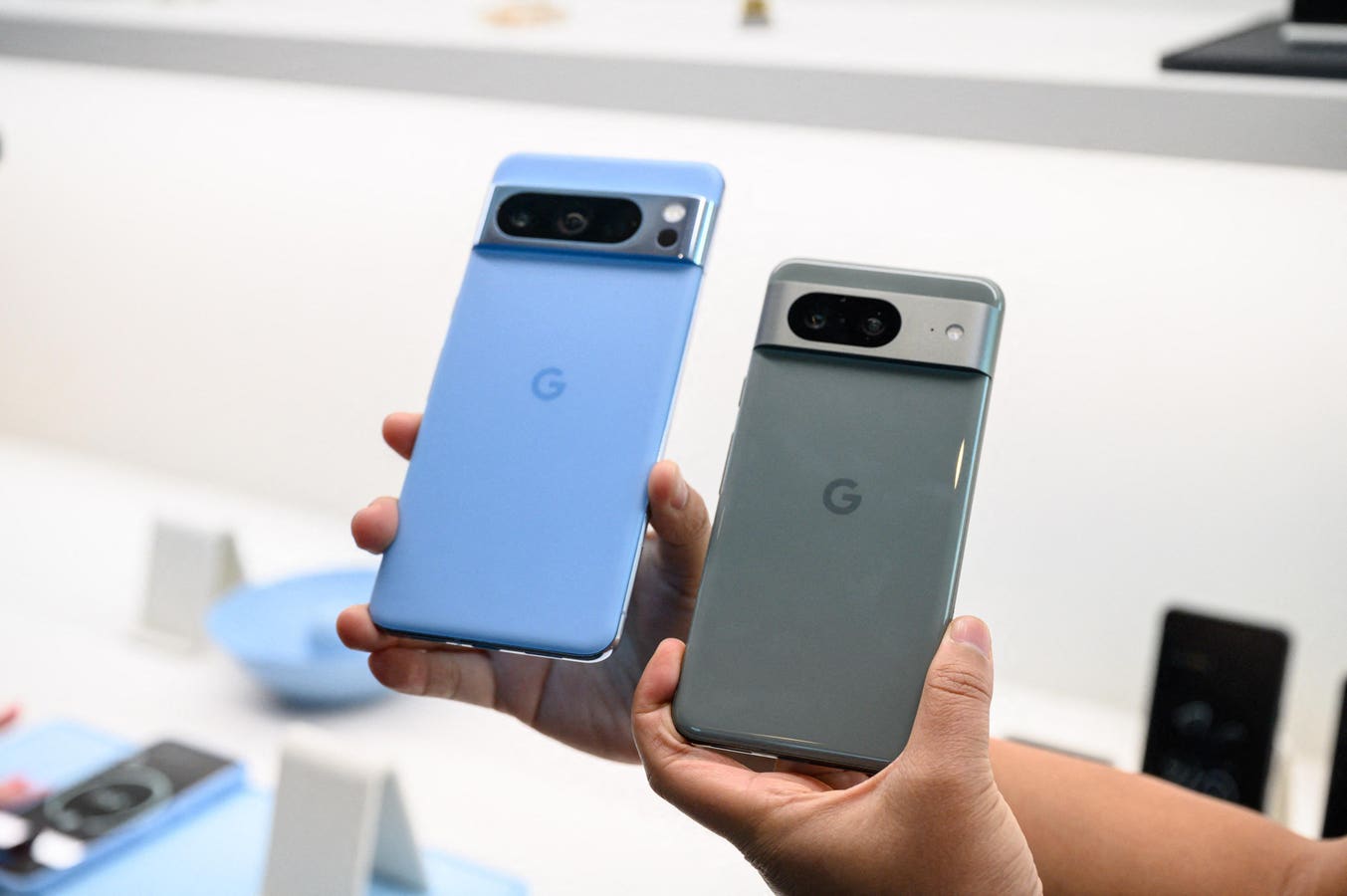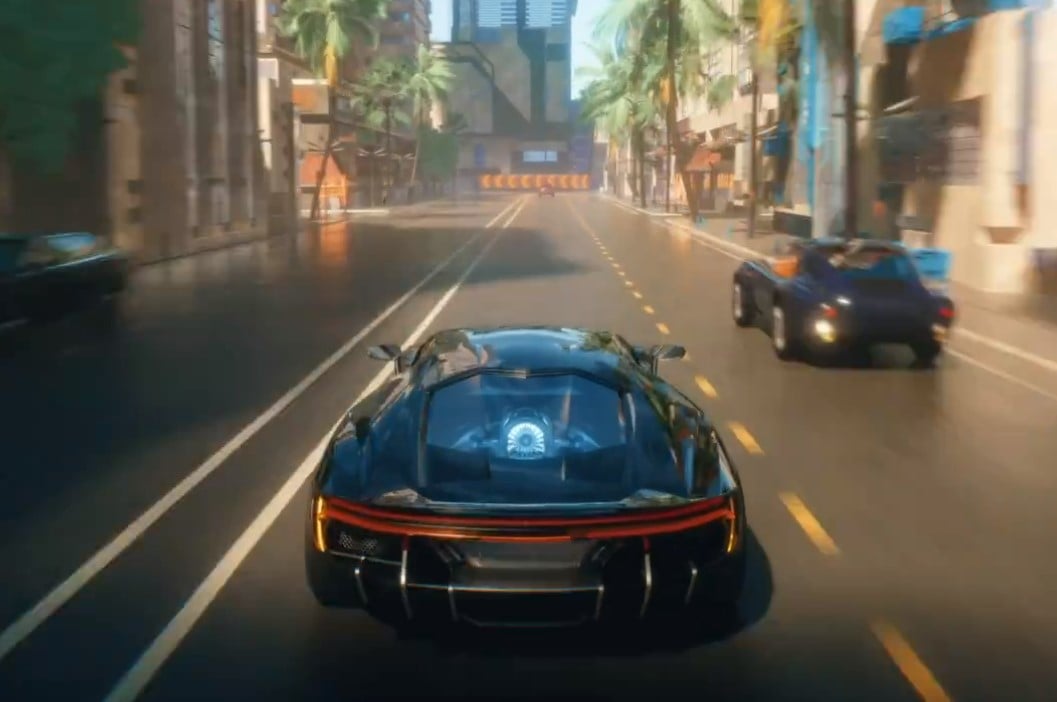Tech
OnePlus 10T vs Google Pixel 6 – PhoneArena


The OnePlus 10T is priced on par with the Pixel 6, skips the zoom camera just like Google’s phone, and sports a snappy and barebones Android interface, again like, you guessed it, the Pixel 6.
That is why we are pitching the new OnePlus 10T versus the “old” Google Pixel 6 to help you choose which one to get on the runup to the September release date here in the US, based on their camera, display, and processor performance benchmarks.
OnePlus 10T vs Google Pixel 6, the main differences:
- Record fast 150W wired charging on the OnePlus 10T, but no wireless charging
- The smaller Pixel 6 display has better color presentation but lower refresh rate
- Snapdragon 8+ Gen 1 chipset is faster than Google’s Tensor 1 and offers better 5G connectivity
- The OnePlus 10 comes with twice the RAM and base storage of the Pixel 6
- Two color options vs three
- 50 MP cameras, but Google is still the mobile photography boss
Design and Display Quality
The OnePlus 10T is undoubtedly the more elegant phone at the front, what with the thinner display bezels and the boxy Pixel 6 appearance. At the back, however, it’s a toss-up between the OnePlus camera island fused with the side frame and the unorthodox camera “strip” of the Pixel 6.
The Pixel’s design is a bit more comfortable to hold and use with one hand, not only because it is more compact, but also because the elevated camera strip serves as a great place to press your index finger against. The OnePlus 10T’s elevated camera area holds three cameras and a flash, while Google’s strip has two and a flash, making for a rather baren appearance in comparison.
The 10T has two color options – Moonstone Black and Jade Green – which, despite the drastic difference in texture and looks, are achieved by using a glass back. The Pixel 6, in comparison, offers three colorways – Kinda Coral, Sorta Seafoam, and Stormy Black – and is again offering a glass back which has a wireless charging coil on the inside, unlike the OnePlus 8T which only charges with the monstrous 150W brick.
Displays
We have to give it to Google and its Pixel line when it comes to display colors. While phones from the BBK holding, like those of Oppo or OnePlus, offer rare per-unit factory calibration on the high-end models for the utmost in wide gamut coverage, Google’s Pixels have perfect display calibration even towards the midrange which is currently occupied by the Pixel 6.
The Pixel 6, on the other hand, has one of the lowest Deltas we’ve measured, near-perfect white balance, and brightness on par with the OnePlus 10T, as if counterweights to the higher refresh rate of the OnePlus phone.
Performance and Software
The Pixel 6 runs on Google’s own Tensor processor, coupled with 8GB RAM and 128GB of base storage. While both phones run their light Android interfaces well, the OnePlus 10T runs the most powerful Android chipset at the moment, so Google’s Tensor has a hard time catching up, especially when it comes to gaming or 5G connectivity where Qualcomm has no equal in terms of bands and filters supported.
But let’s look at the raw specs from our performance benchmarks and let them speak for themselves, especially in the 3D graphics rendering section which is important if you play a lot of games on your phone, here the 10T easily surpasses the Pixel 6:
Camera
The OnePlus 10T has a big but aesthetically pleasing camera island on the back, hosting three sensor and lense combos only one of which makes sense, the 50MP main camera with the Sony sensor. The 8MP ultrawide and 2MP macro camera are compromises and seem to be there for the count.
Can Google compete with the 50MP sensor of the Pixel 6’s main camera and the 12MP of the ultrawide against the newer OnePlus 10T? It can, and then some, as you can see from the samples below.
The crowd-pleasing OnePlus camera algorithms churn out overly warm, yellowish images with unnatural contrast boost. The photos lose some details in the process, while the Pixel 6 not only manages to snap very realistic, true-to-life colors both indoors and outdoors, but also captures more detail and the images have less blur without oversharpening, and the same goes for the 4K sample videos from the two phones below.
Audio Quality
Both the OnePlus 10T and the Pixel 6 list “dual stereo speakers” among their virtues, but it’s a single speaker augmented by using the earpiece as the other one to keep the stereo sound off-balance. The sound from both phones won’t rock your socks, especially in the lows and mids, but they are both sufficiently loud to annoy people on your morning commute still.
It’s also worth noting that the phones lack a headphone jack, so you’d have to pick your poison of USB-C headphones, or wireless ones if you don’t want to use the “stereo speakers.”
Battery Life and Charging
The OnePlus 10T’s added value is its 150W charging system that pumps its 4800 mAh dual-cell battery full of electrons for less than 20 minutes. We measured 23 minutes, to be exact, but that was from a completely depleted state, not the 1% that OnePlus measures from.
There’s no wireless charging like on the Pixel 6, but the ultrafast wired and the inclusion of its 150W brick in the box more than compensates In short, both the battery life and the charging rounds go to the OnePlus 10T here.
Specs Comparison
| Specs | OnePlus 10T | Google Pixel 6 |
|---|---|---|
| Dimensions | 163 mm x 75.37mm x 8.75 mm | 6.24 x 2.94 x 0.35 inches (158.6 x 74.8 x 8.9 mm) |
| Weight | 203.5 grams | 7.30 oz (207.0 g) |
| Screen | 6.7 inches, AMOLED 2412 x 1080 resolution (394 pixels per inch) 120 Hz refresh rate HDR10+ |
6.4 inches, AMOLED 2400 x 1080 resolution, (390 pixels per inch) 90 Hz refresh rate HDR10+ |
| Processor | Qualcomm Snapdragon 8+ Gen 1 | Google Tensor 1 |
| RAM | 8 GB / 12 GB / 16 GB | 8 GB |
| Rear Cameras | 50 MP main (with OIS) 8 MP ultra-wide 2 MP macro |
50 MP main (with OIS) 12 MP ultra-wide |
| Front Camera | 16 MP | 8 MP front |
| Battery Size | 4,800 mAh | 4,614 mAh |
| Charging Speeds | 150W (wired) No wireless charging (150W charger included in the box) |
30W (wired) 15W (wireless) (No charger included in the box) |
| Price | $649 for the 8 GB RAM / 128 GB storage variant $749 for the 16 GB RAM / 256 GB storage variant |
$599 for the 8 GB RAM / 128 GB storage variant |
Conclusion: OnePlus 10T or Pixel 6, which one to buy?
While the specs of the OnePlus 10T and Google Pixel 6 are quite similar, as can be expected given their respective price category, the newer phone is definitely the faster one with its Snapdragon 8+ Gen 1 and the 20-minute charging speed. When it comes to photography, the Pixel 6 has the upper hand, though, despite both having 50MP main cameras.
In other words, if performance while gaming, record charging speeds, and a larger display with smoother refresh rate are more important to you than better dynamic range or night colors in your photos and wireless charging, go for the OnePlus 10T which can now be ordered with a free storage upgrade to boot.
Also check out:
Tech
Venerable Video App Plex Emerges As FAST Favorite – Forbes


With cord cutters and streamers becoming more selective about where they invest their subscription dollars and the costs of premium services like Netflix
NFLX
rising, FAST (Free Ad-Supported TV) services that offer thick bundles of niche channels and vintage content are on the rise with consumers. One of the more interesting contenders is Plex, a privately-held company that started in the late aughts as an app to help video enthusiasts organize and share their home libraries. Plex expanded into the FAST space in 2018, and today announced it has surpassed a thousand channels (1112, in fact, including a just-announced NFL Channel) in its free-to-stream lineup, making it one of the largest inventories in the market.
The rising popularity of the FAST model, which also appeals to advertisers looking to combine the sizzle of a 30-second spot with the data targeting of an online platform, has drawn a lot of players into the space, each with its own spin on a service that can appear very similar to viewers. After all, how many channels of British murder mysteries, 2000s-era prestige shows and Hallmark tearjerkers can providers squeeze through a fiberoptic cable before viewers cease to care exactly where it’s coming from?
The companies that emerge on top need to deliver a unique and special experience for consumers, combined with a strong value proposition for advertisers. Each big player comes with its own advantages: Roku’s OTT experience, Tubi’s origins as an ad-tech platform, Samsung and LG’s ownership of the TV interface, Amazon
AMZN
Prime’s connection to consumers, and so on. Plex’s edge, according to the company’s executives, is its community.
Plex CEO Keith Valory
Courtesy of Plex
“We began as a personal media management software,” said Plex CEO Keith Valory, who joined the company in 2012 at the invitation of co-founder and current chief product officer Scott Olechowski. “Eventually, we thought that the more interesting problem to solve over time is media chaos. People shouldn’t have to go to 20 different apps to get the content they want.”
Valory says Plex had grown a fanbase of hardcore videophiles who use the product to keep track of extensive media libraries. These enthusiasts pushed the company to develop rich capabilities around content management, discovery, recommendations, reviews and shareability, which turn out to be important differentiators when viewers are faced with thousands of choices.
Valory says he and Olechowski began building the framework for the AVOD (ad-supported video on demand) strategy in 2017, doing business development deals with studios and building relationships. They launched the service in 2019, just in time to benefit from the COVID streaming boom. “We launched our FAST channels and continued to accelerate the business,” he said. Over time, Plex has added live content, sports and hyperlocal channels to the service, which is available in over 180 countries worldwide, offered through the familiar Plex interface.
!function(n) if(!window.cnxps) window.cnxps=,window.cnxps.cmd=[]; var t=n.createElement(‘iframe’); t.display=’none’,t.onload=function() var n=t.contentWindow.document,c=n.createElement(‘script’); c.src=’//cd.connatix.com/connatix.playspace.js’,c.setAttribute(‘defer’,’1′),c.setAttribute(‘type’,’text/javascript’),n.body.appendChild(c) ,n.head.appendChild(t) (document);
(function()
function createUniqueId()
return ‘xxxxxxxx-xxxx-4xxx-yxxx-xxxxxxxxxxxx’.replace(/[xy]/g, function(c)
var r = Math.random() * 16 );
const randId = createUniqueId();
document.getElementsByClassName(‘fbs-cnx’)[0].setAttribute(‘id’, randId);
document.getElementById(randId).removeAttribute(‘class’);
(new Image()).src = ‘https://capi.connatix.com/tr/si?token=546f0bce-b219-41ac-b691-07d0ec3e3fe1’;
cnxps.cmd.push(function ()
cnxps(
playerId: ‘546f0bce-b219-41ac-b691-07d0ec3e3fe1’,
storyId: ”
).render(randId);
);
)();
According to Gavin Bridge, VP of Media Research for CPG Global and a FAST-focused analyst who tracks the number of FAST channels in the United States via his monthly FASTMaster report, there were more than 1,963 FAST channels in the U.S. alone as of March 2024. Currently, Plex accounts for 847 of them, and it’s growing every day.
Building click-appeal for viewers is one part of the FAST equation, but the other critical component is serving that audience up to advertisers in the narrowest, most targeted slices possible. Every FAST platform has its own proprietary algorithms for targeting and programmatic placement of the right spots to the right viewers, based on what it knows about its audience’s behavior and proclivities. Sponsors need to weigh that when deciding how to allocate their media dollars.
Valory says Plex’s edge comes from its data. “We’re very open about and transparent about sharing data with both our content partners and our advertising partners within privacy limits,” he said. “But we also have a different, more affluent set of users because they’re coming in to manage a number of their subscriptions and whatnot. We can identify them in aggregate [preserving privacy] and essentially create high-end profiles of what users are watching across every device, every country and every service.”
Because of its unique heritage, Plex has data that no one else has, relating to user behavior behind the firewall in consuming their owned video content. Valory says that many users opt in to sharing this data to improve recommendations and relevance. “We have an opportunity to help advertisers target those users on other platforms like TikTok or Facebook,” Valory said.
The company has also invested in its ad delivery capabilities. “We’re making sure we’ve optimized our ability to stay in the programmatic market, to the point that our programmatic auctions are vastly outperforming our direct sales,” said Todd Hay, VP of Revenue and Engagement for Plex. “The next step was to enrich what that inventory looks like. Advertisers like having that visibility for brand safety.”
Hay says the company uses its detailed data about viewer behavior to help micro-target in-stream trailers, native advertising, sponsored hubs, and opportunities to insert content into a viewer’s watch list with a one-click popup. He says this helps brands target consumers by their affinities: for example, correlating cruise ads to food programming because of the high correlation between those viewers and that product.
The frequency, duration and interruptive nature of these spots – even if they are highly targeted and relevant – has irritated some users, including many in the hardcore Plex fan community, who look askance at the company’s shift in focus away from their beloved media app and toward the streaming market. Many have asked for a premium ad-free paid tier, but that is precluded by FAST content distribution and licensing agreements, according to the company.
Valory acknowledges the concerns of the community. “We love our superfans and their needs are very important,” he said. “I think many of them understand that, realistically, for us to grow and thrive, we can’t just be a personal media server running at home. But at the same time, the largest development team in the company still services the personal media product even though it is not the largest revenue business, and we’re only able to do that because of all the other things we’re doing.
“People will say oh, that’s just the CEO giving a political answer, but I assure you, we talk about this all the time internally, and some of the biggest superfans and loudest users of the product are the people who work here.”
Valory said that Plex, which currently does not disclose financial information, generates roughly 20 percent of its revenues from member subscriptions, which unlock premium capabilities of its media platform, compared to 80 percent from the ad business.
Moving forward, Valory says the company sees opportunities in bundling paid subscription models, using Plex’s detailed knowledge of user tastes and behavior. “Some services are paying insane amounts on user acquisition,” said Valery. “I think our better opportunity is to help other subscriptions bundle and create discounts for end users. We don’t need to take a dime of that; we will make our money on advertising and helping people get the content they want.”
The shakeout of premium SVOD services is just getting underway, and the FAST/AVOD market, with its range of players and distinct value propositions, makes it a difficult environment for advertisers, investors and consumers to place their bets. But whatever the future of streaming holds, Plex is betting that the best strategy is to build out from the center
Promotional image for Plex, 2024
Image via Plex
.
Tech
New Realme Narzo 70 series phone coming soon, teasers promise faster charging, lag-free performance – gizmochina


Realme recently launched the Narzo 70 Pro 5G smartphone in India, featuring an appealing design and the Dimensity 7050 chip. The brand has teased the release of a new Narzo phone through its X handle, suggesting it could be another addition to the Narzo 70 series.
New Narzo 70 series phone teased
The above teaser reveals that the upcoming Narzo phone will provide a lag-free experience. The other teaser suggests that the device will arrive with fast charging support. It states that a few minutes of charging will allow it to run for a couple of hours.
The Narzo 70 Pro packs a 5,000mAh battery with 67W fast charging. It is unclear whether the upcoming phone will offer faster charging capabilities than the Narzo 70 Pro. It is advisable to wait for further teasers to confirm the phone’s moniker.
To recall, the Realme Narzo 70 Pro 5G features a 6.7-inch FHD+ 120Hz AMOLED display with a peak brightness of 2000nits. Powered by the Dimensity 7050 chip, it comes with LPDDR4x RAM and UFS 3.1 storage for smooth performance. It packs a 5000mAh battery and 67W fast charging support.
On the front, the device features a 16-megapixel selfie camera. Its back panel has a 50-megapixel Sony IMX890 primary camera with OIS support, an 8-megapixel ultra-wide lens, and a 2-megapixel macro camera. The phone runs on Realme UI 5-based Android 14.
The Narzo 70 Pro offers other features, such as an IP54-rated chassis, an in-display fingerprint scanner, rainwater smart touch technology, dual speakers, a 3D VC cooling system, and 8GB virtual RAM.
In terms of pricing, the 8GB+128GB variant of the Narzo 70 Pro retails at Rs 17,999 (~$215). On the other hand, the 8GB+256GB variant costs Rs 21,999 (~$265). It comes in Glass Green and Glass Gold shades.
RELATED:
[embedded content]
Tech
iPhone 15 Pro Desperado Mafia model launched at over ₹6.5 lakh- All details about this luxury iPhone from Caviar – HT Tech


Would you like to buy an exclusive iPhone 15 Pro which costs more than Rs.6.5 lakhs? Well, a Dubai-based luxury brand named Caviar launched the high-end version of the iPhone 15 Pro which is inspired by popular mafia movies. The new iPhone 15 Pro model comes under “Desperado Mafia” which has three unique designs which may grab your attention but the price point may shock many buyers. Know more about this exclusive iPhone 15 Pro collection.
iPhone 15 Pro Desperado Mafia collection
The Desperado Mafia comes with three custom iPhone 15 Pro designs which include Godfather, Revenge, and Capone. All the variants are based on mafia movies and feature black titanium, gold accents, quotes and symbols to make it look attractive.
Also read: iPhone 15 vs Samsung Galaxy S24
Not sure which
mobile to buy?
The Godfather model of iPhone 15 Pro features a quote from the film which says, “It’s not personal, it’s just business.” Caviar said it is “Designed for lovers of gangster movies and masculinity, “Godfather” emphasises your manliness and taste.”
The Revenge variant is inspired by the famous Netflix series “Peaky Blinders.” This model features a skull cleaved by a blade which represents struggle and strength. Lastly, the Capone model is inspired by “The Untouchables” and features a quote saying “Never stop fighting until the fight is done.” This quote highlights the “symbol of courage, urging you to overcome challenges and never give up.”
Also read: Apple to make the iPhone 16 Pro models ‘colourful’ using tech from iPhone 15
iPhone 15 Pro Desperado Mafia collection price
The 128GB iPhone 15 Pro under the Desperado Mafia collection starts at $8060 for the “Capone” model. Whereas, the iPhone 15 Pro Max Revenege will be priced at $10270 for the 1TB storage variant.
Additionally, caviar is also offering exclusive packaging for the Desperado Mafia collection of iPhone 15 Pro. On the outside of the box, you’ll see the company logo and name in gold. Once you open the box, you’ll see “Caviar Royal Gift” written inside with the new iPhone 15 Pro.
One more thing! We are now on WhatsApp Channels! Follow us there so you never miss any updates from the world of technology. To follow the HT Tech channel on WhatsApp, click here to join now!
-



 Sports18 hours ago
Sports18 hours agoTeam Canada’s Olympics looks designed by Lululemon
-



 Politics23 hours ago
Politics23 hours agoPolitical interference in Canada’s pension funds is wrong
-
Business17 hours ago
Firefighters battle wildfire near Edson, Alta., after natural gas line rupture – CBC.ca
-



 Sports23 hours ago
Sports23 hours ago‘BOTTCHER BOMBSHELL:’ Alberta curling foursome set to move forward without skip
-
News23 hours ago
Freeland tables her fourth federal budget — this time with a tight focus on housing
-
News19 hours ago
Richard Chevolleau Short Film “Marvelous Marvin” Set to go to Camera
-



 Investment20 hours ago
Investment20 hours agoStephen Poloz will lead push to boost domestic investment by Canadian pension funds
-
Economy23 hours ago
$535B budget projects $39.8B deficit, aims to restore economic fairness






